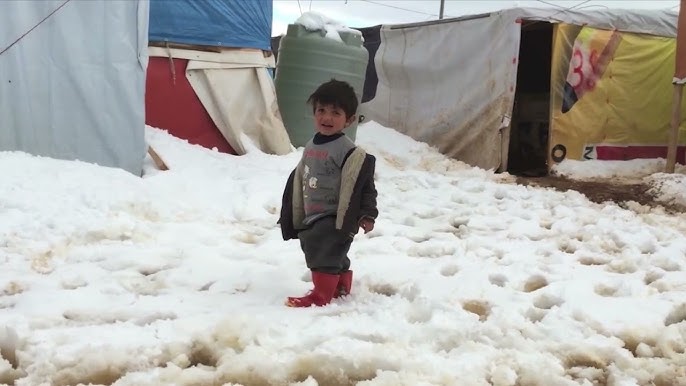Canada Global (Web News) Yahya al-Batran tightly held the clothes of his newborn son, Jumaa, who tragically died from the cold just days after being born in their makeshift tent in war-torn Gaza.
“We are watching our children die before our eyes,” said Yahya, 44.
Jumaa was one of seven children who perished from the freezing temperatures within a week, according to Gaza’s health ministry. The Batran family, displaced from Beit Lahia due to bombings, now faces an even greater threat: the bitter cold.
“We fled the bombings, only for them to die from the cold here?” said Noura al-Batran, the child’s mother. Noura, still recovering from a premature birth, now cares for her surviving twin, Ali, who is being treated in an ICU in southern Gaza.
The family, like many others in Gaza, lives in a fragile tent in Deir el-Balah, constructed from worn blankets and fabric. As temperatures plummeted to 8°C (46°F), they struggled to stay warm and dry amidst heavy rains.
“We don’t have enough blankets or proper clothing. I saw my baby freeze, his skin turned blue, and then he died,” Noura sobbed.
The twins were taken out of an incubator in the absence of heating, leaving them vulnerable to the harsh conditions.
In another part of Gaza, Mahmoud al-Fasih found his infant daughter Seela “frozen from the cold” in their small tent near al-Mawasi beach. Despite rushing her to a hospital in a designated “humanitarian zone,” she was already dead from hypothermia.
Another child, Aisha al-Qassas, also succumbed to the cold in the same region.
“In Gaza, everything leads to death,” said Aisha’s uncle, Mohamed al-Qassas. “Those who don’t die from bombings die from hunger or cold.”
The Hamas government warned that worsening weather in the coming days poses a “real threat” to the two million displaced people in Gaza, most of whom are living in tents. Dr. Ahmad Al-Farra, a hospital director, warned that the cold, combined with a lack of heating, will likely lead to more deaths, particularly among children and the elderly.


